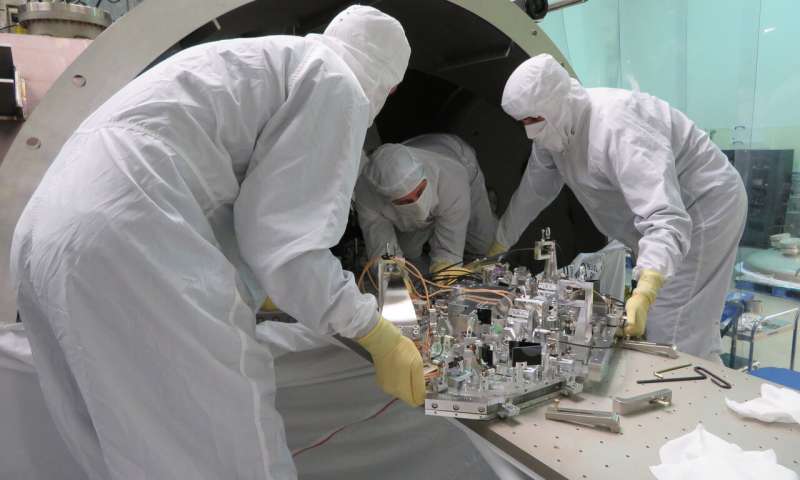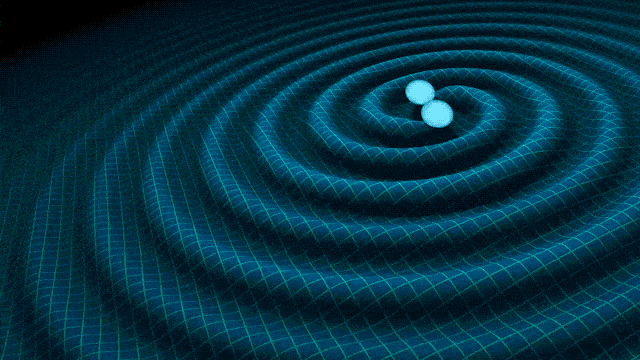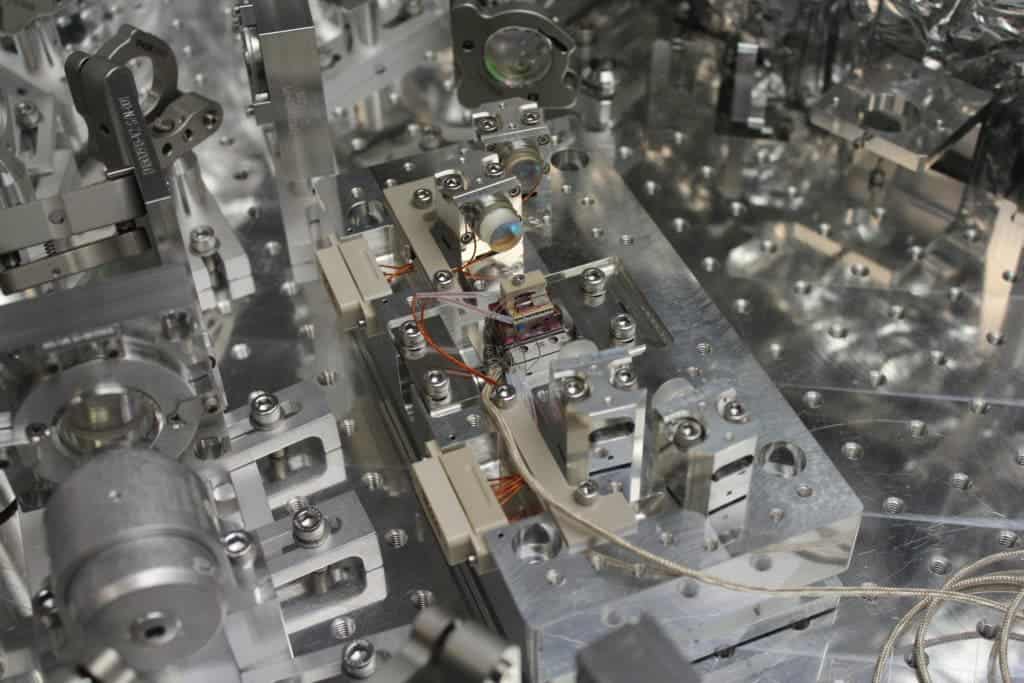
In 2016, physicists detected gravitational waves for the first time. Since this monumental milestone in science, researchers have detected several dozens of gravitational waves using the Laser Interferometer Gravitational-wave Observatory (LIGO), including one generated by the merger of two neutron stars.
A year ago, LIGO was able to pick up gravitational wave signals every month or so. Since April, when the experiment was turned on for its third run, scientists have installed quantum vacuum squeezers to detect ripples in space-time nearly every week. What’s more, the upgrade has also extended the range of the detector by 15%, meaning that LIGO can now listen for the subtle oscillation in space-time generated by a source as far as 140 megaparsecs, or more than 400 million light-years away.
Quantum leap in gravitational wave detection
The existence of gravitational waves, which were first predicted by Einstein’s Theory of General Relativity about a hundred years ago, was confirmed only in 2016. The event was recorded by LIGO, whose founders were awarded the 2017 Nobel Prize in Physics.
Gravity waves are essentially ripples in the fabric of spacetime which are generated by interactions between very massive accelerating cosmic objects, such as neutron stars or black holes. Physicists liken gravity waves to the waves generated when a stone is thrown into a pond.

LIGO consists of two identical detectors, one found at Hanford, Washington, and the other at Livingston, Louisiana. Each detector is designed in the shape of L, where both arms are essentially 4-kilometer-long tunnels.
In order to detect gravitational waves, a laser beam is fired from the corner of the L-shaped detector down each arm, at the end of which a mirror is suspended. The laser pulses bounce on and off the mirrors, and when a gravity wave passes through the detector, it slightly shifts one of both of the mirrors. This, in turn, affects the timing of each laser’s arrival back at the origin, which ultimately enables physicists to measure the gravitational wave signal.

Detecting gravitational waves involves measuring a change in distance 1,000 times smaller than the width of a proton. At this scale, physicists have to mitigate for some spooky quantum effects. One of them is quantum noise in the laser’s surrounding vacuum. Although you might have heard that vacuum is nothingness, when you zoom in to look at the very, very small, subatomic particles, like photons, they pop in and out of existence — and at a speed so fast that it can be almost impossible to detect.
“Where quantum mechanics comes in relates to the fact that LIGO’s laser is made of photons,” explains lead author Maggie Tse, a graduate student at MIT. “Instead of a continuous stream of laser light, if you look close enough it’s actually a noisy parade of individual photons, each under the influence of vacuum fluctuations. Whereas a continuous stream of light would create a constant hum in the detector, the individual photons each arrive at the detector with a little ‘pop.'”
“This quantum noise is like a popcorn crackle in the background that creeps into our interferometer, and is very difficult to measure,” adds Nergis Mavalvala, professor of astrophysics at MIT.
It’s the presence of these photons or quantum noise that adds uncertainty in the measurements, making it challenging for scientists to discern gravitational wave signals.
Your noise is my signal

The fix lies in so-called quantum squeezers. The idea, which has been around since the 1980s, involves imagining the quantum vacuum noise as a sphere of uncertainty along two main axes, which correspond to the phase and amplitude of the photons. By squeezing this sphere, in such a way that it becomes constricted around the amplitude axis, this shrinks the uncertainty in the amplitude state of the vacuum while increasing uncertainty in the phase state. This is desirable because it is predominantly phase uncertainty that contributes to noise in LIGO, making the detector more sensitive to gravitational wave signals.
“The challenge with building squeezers is that the squeezed vacuum state is very fragile and delicate,” Tse said in a statement. “Getting the squeezed ball, in one piece, from where it is generated to where it is measured is surprisingly hard. Any misstep, and the ball can bounce right back to its unsqueezed state.”
MIT researchers have been working at quantum squeezers for the last 15 years. This year they finally managed to successfully create and install quantum squeezers at LIGO, increasing the rate of gravitational wave detection to weekly and extending the range of detection by 15%.
Besides improving the range and rate of gravitational wave detection, the new upgrade also enables scientists to gain more information about the sources of the signal.
“We have this spooky quantum vacuum that we can manipulate without actually violating the laws of nature, and we can then make an improved measurement,” Mavalvala says. “It tells us that we can do an end-run around nature sometimes. Not always, but sometimes.”
The new achievement described in the journal Physical Review Letters.









